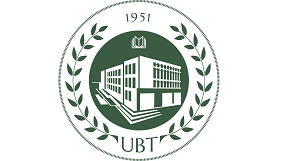|
*FATMIRA LEKA (SULAJ), FIQIRI TAHIRI, LUAN HAJNO, HELGA TOPI Agricultural Technology Transfer Center, Fushe Kruje – Albania Livestock Technologies Department *Corresponding author sulafatmira@ymail.com Abstract Reproduction is the main factor in determining the efficiency of animal production. Reproductive efficiency can be described as a measure of the ability of cows to conceive and produce calves. Fertility economic level is usually assessed by the calving interval, the period between 2 successive calving. Management factors conditions the improve reproductive performance to optimize, in herds of cows with high genetic capacity. For the study is analyzing the information collected in three regions of the country (Fier, Durrës, Shkodër) to (n = 1200) cows of Holstein breeds included in the Book of Breed which serves as a basis for evaluating performance production and reproductive of herds milk production. This cattle population is extended (n = 90) dairy farms. The total of (n = 1505) complete lactations and estimates, about (n = 987) met the criteria lactations for further processing for performance evaluation and ranking of cattle production by level of production. The data cover the period from 01.01.2012 – 31.12.2015. The processing of data, resulting an average milk production of 5618 kg / 305 day lactation with a variation of 3176-8128 kg / 305 days lactation and an average age of 4.89 years with a variation from 3.2 to 7.81 years. The survey data show that significant differences are found between herds regarding the production of milk. Also observed differences regard to the average age between herds. 25% of the populations of cows have extended lactations (390-540 days) and therefore long calving intervals across from optimal, which occur primarily in first lactation cows. The interval between calving is the most important indicator of herd reproduction. In the study undertaken this indicator is (431 ± 113) days (n = 621). Reproduction efficiency of cattle with higher production capacity remains one of the challenges facing today’s big and medium farms level. In this context, the study aims to optimize reproductive performance through improved breeding conditions influencing the interval calving – calving in cows with high production capacity. Keywords : Performances, efficiency, reproduction, lactation, calving interval, cow, breed. |

